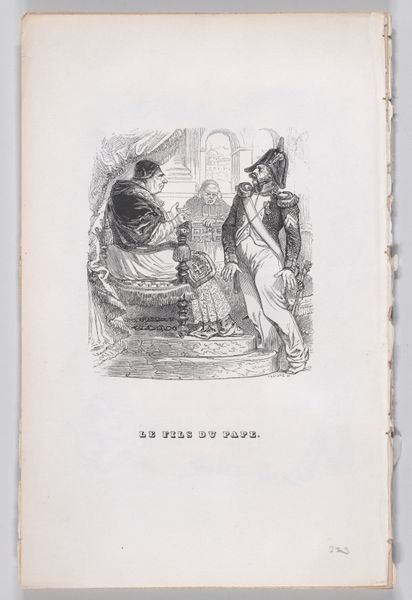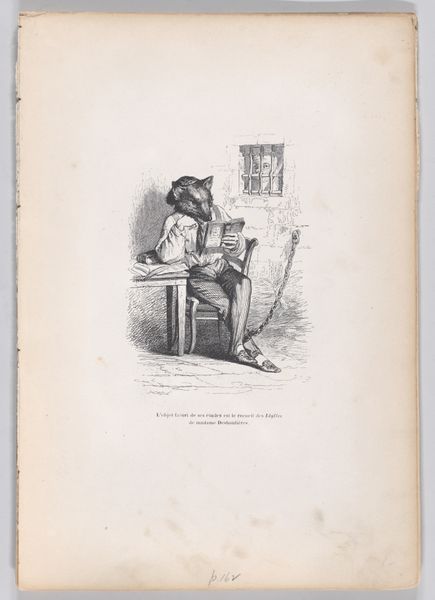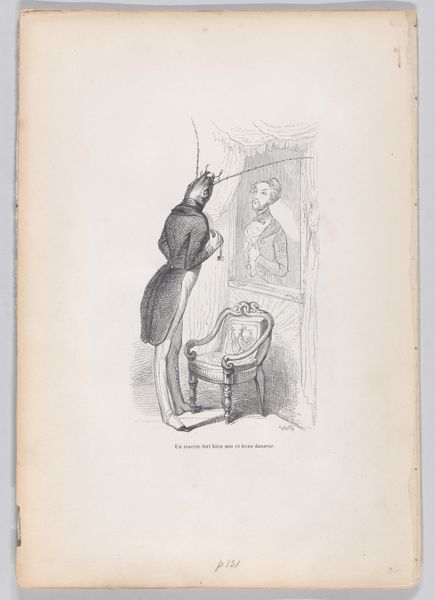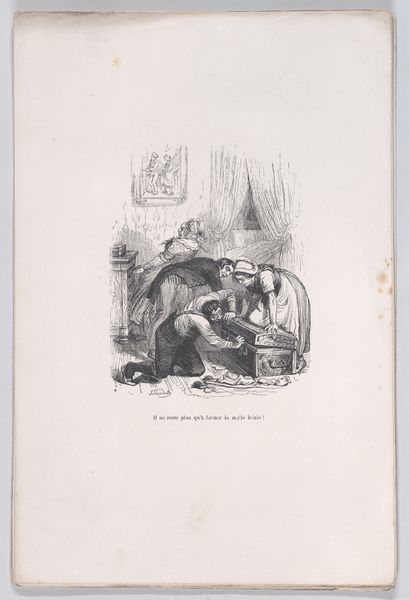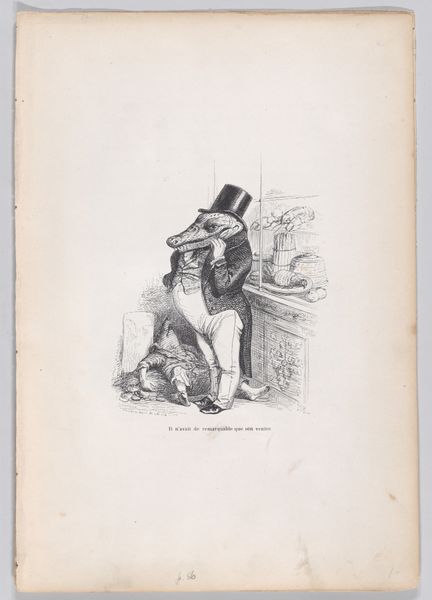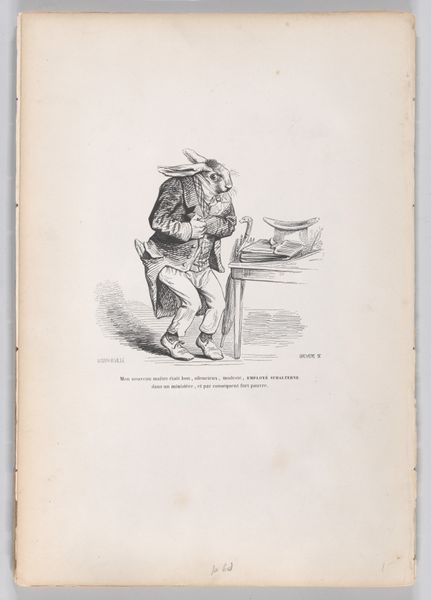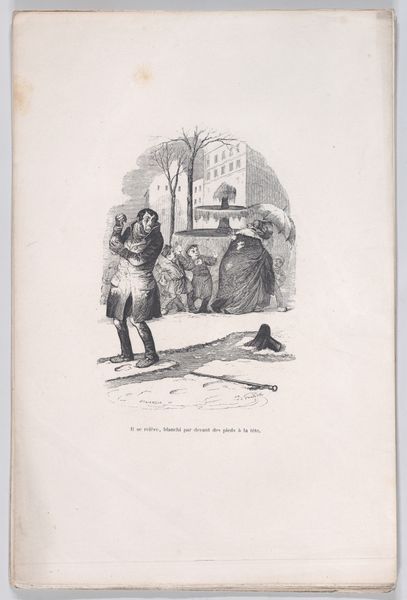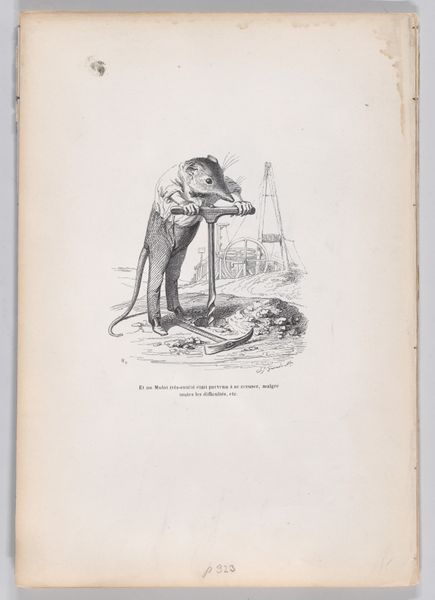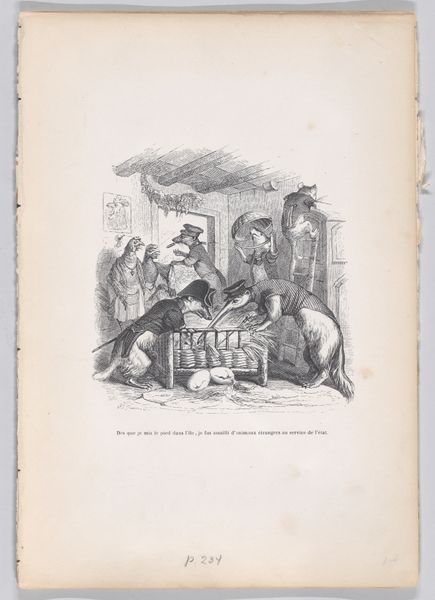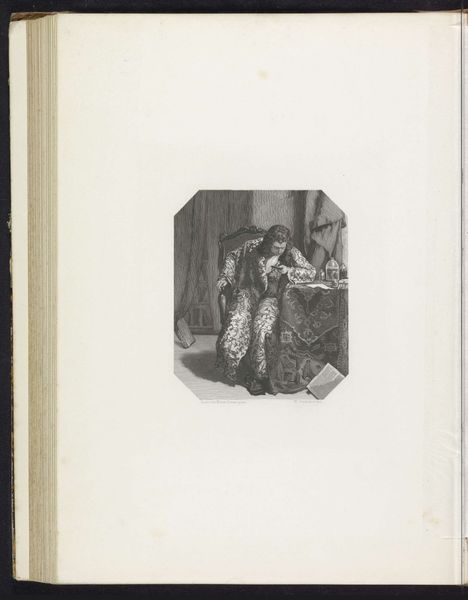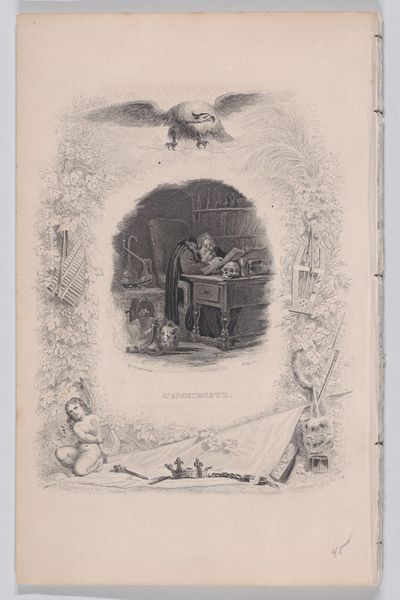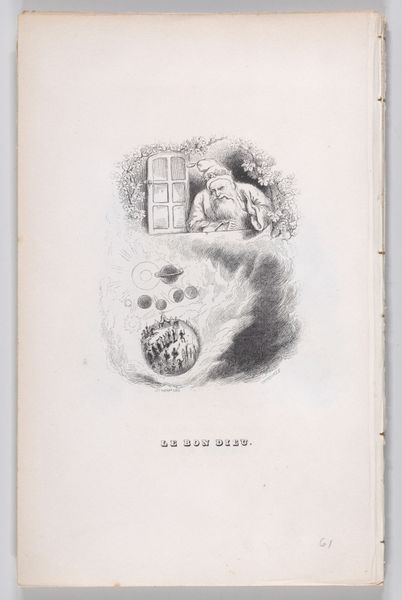
"The Little Red Man" from The Complete Works of Béranger 1836
0:00
0:00
drawing, print, engraving
#
drawing
#
aged paper
# print
#
caricature
#
personal sketchbook
#
genre-painting
#
engraving
Dimensions: Sheet: 8 5/8 × 5 1/2 in. (21.9 × 14 cm)
Copyright: Public Domain
Curator: Standing before us is an engraving entitled "The Little Red Man," a piece by J.J. Grandville dating back to 1836. It originates from a collection known as "The Complete Works of Béranger" and resides here at the Met. Editor: Well, my first thought is a touch of whimsy mixed with dread. The composition has an eerie fairytale vibe, like a story the Brothers Grimm decided to spice up! Curator: Absolutely. Grandville's style, characterized by these satirical caricatures, often married the fanciful with societal critiques. In terms of visual architecture, we see stark contrasts between light and shadow, emphasizing the grotesqueness of the figure. Editor: I’m especially struck by that grotesque figure. Is he the "Little Red Man" himself? Look at the almost demonic facial features paired with the attire of a courtly gentleman! It's a jarring juxtaposition! I also note that his shadow seems unusually menacing. Curator: Indeed! The layering here serves as a commentary. That figure, frozen between jest and monstrous, embodies hidden truths about societal norms. It draws the eye, of course, yet its context provides even more narrative depth. Notice how Grandville plays with form, subtly layering shadows that almost envelope both characters, blurring what's visible with what remains unseen. Editor: Precisely! It makes one consider that the ‘Little Red Man,’ despite the fantastical presentation, may merely be a reflection of human tendencies laid bare, rendered in an exaggerated almost dreamlike manner. What appears strange and supernatural might simply mirror concealed facets of ourselves. The window off to the side suggests an exit but at what cost and into what world? Curator: The old woman, or perhaps more accurately, old spirit within, gazing listlessly at her world, could be interpreted as wisdom overlooking a foolish and chaotic reality. A great many philosophical points spring up here and I feel Grandville encourages this openness. Editor: I leave this with a new found recognition for the importance of seeing a subject from various sides and through many mediums to fully consider its intent and symbolism. Curator: Indeed. A visit with Grandville leaves much to contemplate! Thank you for your insights.
Comments
No comments
Be the first to comment and join the conversation on the ultimate creative platform.
